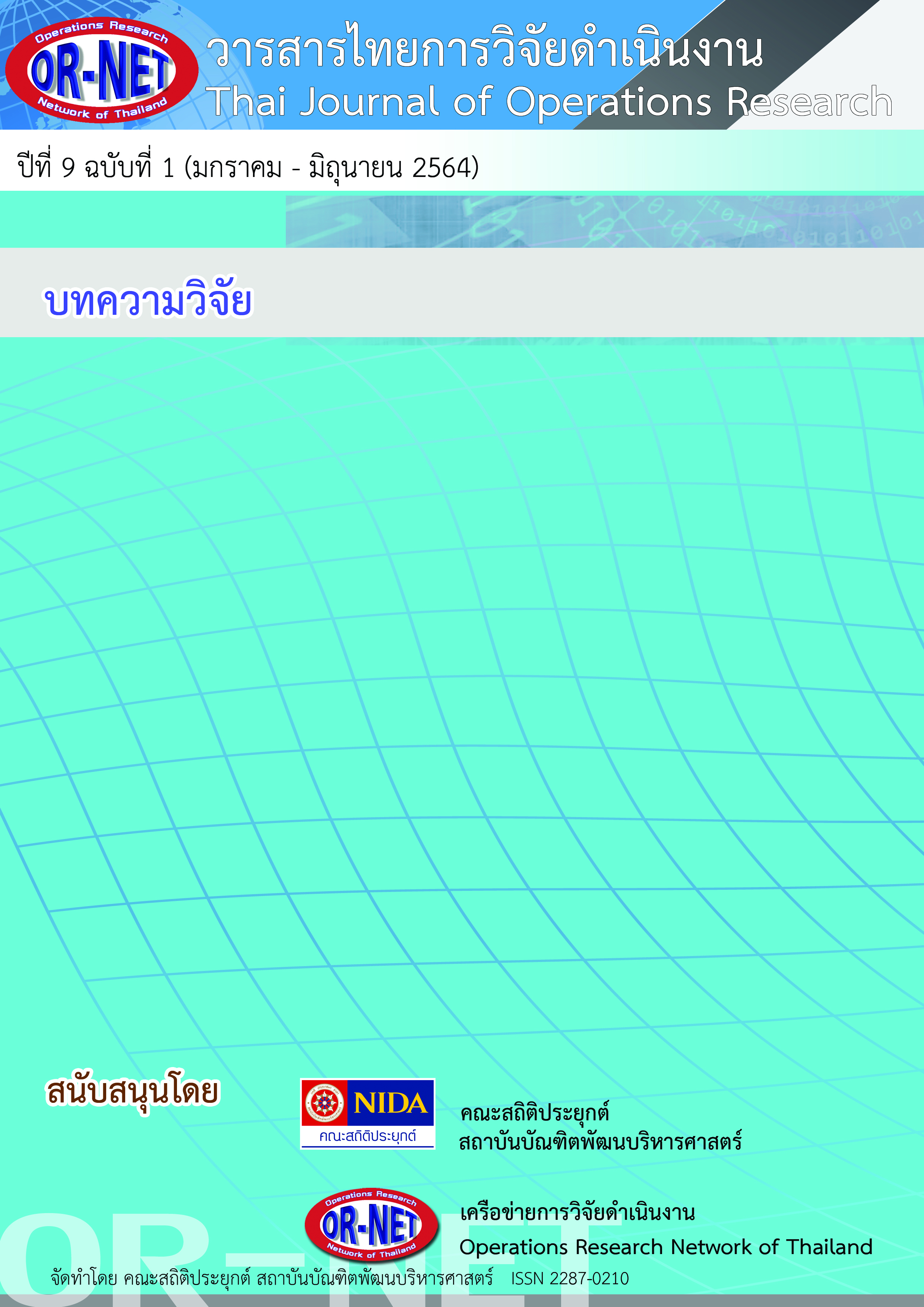Determining the Optimal Base Stock Level when Demand and Supply Disruption Length are Discretely Distributed
Keywords:
Keywords: Supply disruption, Inventory holding, Base stock system, Periodic review inventory system.Abstract
Abstract
In the face of possibility of supply disruption, an organization needs an approach to deal with the problem. This research work uses an inventory holding approach to address the supply disruption problem under a periodic review base stock inventory system. The objective of this research work is to determine the optimal base stock level, which yields the minimum total costs per unit of time. Considering both demand and supply disruption length as discrete distributions can help an organization derives the optimal base stock level when both demand and supply disruption length do not fit with any prevailed distribution, which fills the gap in the literature. In the numerical experiment section, using a wide range of parameters, it is found that the optimal base stock level and the minimum expected total costs per unit of time can be determined.
Keywords: Supply disruption, Inventory holding, Base stock system, Periodic review inventory system.
References
[2] B. Tomlin, “On the value of mitigation and contingency strategies for managing supply chain disruption risks”, Management Science, vol. 52, no. 5, pp. 639-657, 2006.
[3] C. Saithong and H. T. Luong, “Effect of supply disruption on inventory policy,” European Journal of Industrial Engineering, vol. 13, no. 2, pp. 178-212, 2019.
[4] D. P. Warsing Jr, W. Wangwatcharakul and R. E. King, “Computing optimal base-stock levels for an inventory system with imperfect supply,” Computers & Operations Research, vol. 40, no. 11, pp. 2786-2800, 2013.
[5] D. Wang, O. Tang and L. Zhang, “A periodic review lot sizing problem with random yields, disruptions and inventory capacity,” International Journal of Production Economics, vol. 155, pp. 330-339, 2014.
[6] A. J. Schmitt, L. V. Snyder and Z. J. M. Shen, “Inventory systems with stochastic demand and supply: Properties and approximations,” European Journal of Operational Research, vol. 206, no. 2, pp. 313-328, 2010.
[7] A. J. Schmitt and L. V. Snyder, “Infinite-horizon models for inventory control under yield uncertainty and disruptions,” Computers & Operations Research, vol. 39, no. 4, pp. 850-862, 2012.
[8] B. M. Lewis, A. L. Erera, M. A. Nowak and C. W III. Chelsea, “Managing inventory in global supply chains facing port-of-entry disruption risks,” Transportation Science, vol. 47, no. 2, pp. 162-180, 2013.
[9] W. A. Jauhari, S. Mayangsari, N. A. Kurdhi and K. Y. Wong, “A fuzzy periodic review integrated inventory model involving stochastic demand, imperfect production process and inspection errors,” Cogent Engineering, vol. 4, no. 1, Article ID. 1308653, 2017.
[10] L. Qi, Z. J. M. Shen and L. V. Snyder, “A continuous-review inventory model with disruptions at both supplier and retailer,” Production and Operations Management, vol. 18, no. 5, pp. 516-532, 2009.
[11] C. Saithong and H. T. Luong, “Effects of supply disruption on optimal inventory policy: The case of (r, S) continuous review inventory policy,” International Journal of Industrial and Systems Engineering, vol. 35, no. 4, pp. 482-508, 2020.
[12] E. Iakovou, D. Vlachos and A. Xanthopoulos, “A stochastic inventory management model for a dual sourcing supply chain with disruptions,” International Journal of Systems Science, vol. 41, no. 3, pp. 315-324, 2010.
[13] A. M. Ledari, S. H. R. Pasandideh and M. N. Koupaei, “A new newsvendor policy model for dual-sourcing supply chains by considering disruption risk and special order,” Journal of Intelligent Manufacturing, vol. 29, no. 1, pp. 237-244, 2018.
[14] K. Skouri, I.Konstantaras, A. G. Lagodimos and S. Papachristos, “An EOQ model with backorders and rejection of defective supply batches,” International Journal of Production Economics, vol. 155, pp. 148-154, 2014.
[15] C. Saithong and S. Lekhavat, “Derivation of closed-form expression for optimal base stock level considering partial backorder, deterministic demand, and stochastic supply disruption,” Cogent Engineering, vol. 7, no. 1, 1767833, 2020.




